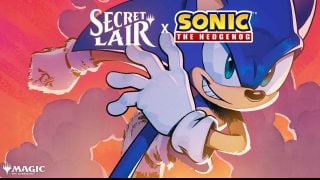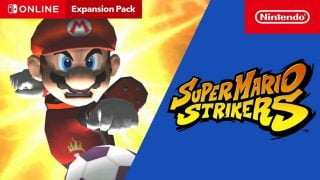The idea of a console based Pokémon experience has been just out of the purview of probability for decades now. After all, the series is a handheld staple and system seller, with developer Game Freak constantly cramming in more creatures and features from game to game. Now here we are, at the eighth generation of Pokémon and a curious system that brings the best of home and handheld together, practically forcing their hand when it comes to the Switch.
Thankfully, the spirit of Pokémon (of catching and collecting these monsters while aiming to be the very best) is alive and well — perhaps more than it’s ever been in a single pair of games. It just comes at the expense of pushing the franchise forward in other areas. There’s a lot to love about Pokémon Sword & Shield; just be prepared to take a few letdowns with the upswells, depending on what really makes the series for you.
New Pokémon, new ideas, new friends
Before delving into the game itself, the new batch of Pokémon added this generation deserve a quick spotlight. As has been the case since Kalos, it’s a smaller batch of brand new species than what longtime fans indoctrinated into the idea of there being 150 or more to see. Instead we have about 80 additions, anchored by a new trio of starters and a pair of lupine box art Legendaries.
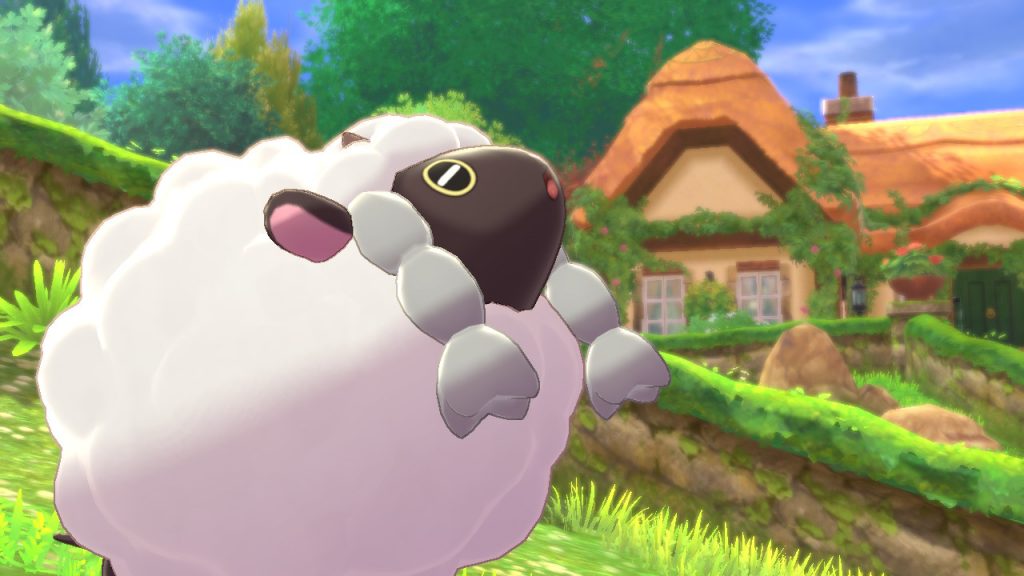
Grookey, Scorbunny, and Sobble are all likable first choices and continue the design trend of giving the starters set and identifiable personalities. I knew I wanted the energetic and slightly boastful Scorbunny by my side since their reveal, but others might be more taken with Grookey’s curiosity or Sobble’s endearing sadness. It’s when you go beyond these three though that you start to see that Galar (and Game Freak) have plenty of unique offerings. Brand new type combinations, interesting concepts, unique evolution methods, and more are waiting for you the whole region over.
Complementing the new are some familiar faces given a regional makeover. Much like Sun & Moon’s Alolan forms, Galar gives older Pokémon new looks or typings. These Galarian forms are a step above Alola’s, including more than just picks from the first generation. They don’t make up a significant portion of the Dex, but they do open the door to new evolutions and possibilities. It’s a trend I hope continues, though the real stars remain the more experimental new additions.
Throughout my time with the game, every new Pokémon was a treat, reminding me of why I’ve loved this series for so long. I conquered the League with a haunted teacup, a series of hat-witches, a dopey looking apple dragon, and plenty more various friends from there. They mostly fit right in, both with their predecessors — yes we’ll touch on the National Dex a bit later — and within Galar itself. There’s a distinct lowering to the amount of featured legendary Pokémon as of right now, though I’d rather that than an overabundance. It’ll be exciting to see how they develop in the competitive scene, but as far as journeying through the region goes, they’re aces.
Battling through the Galar region
Once again, you’re a youth of indeterminate age setting out through a Pokémonized pastiche of a real world locale, this time England. The Galar region manages to be one of the most visually appealing regions yet. You’ll venture through pastoral countryside, a few highly developed cities, and some glittering caves and forests that actually got me to stop and admire the areas. Colors and set pieces are used well throughout these places you’ll go while adhering to a distinct Pokémon look and feel.
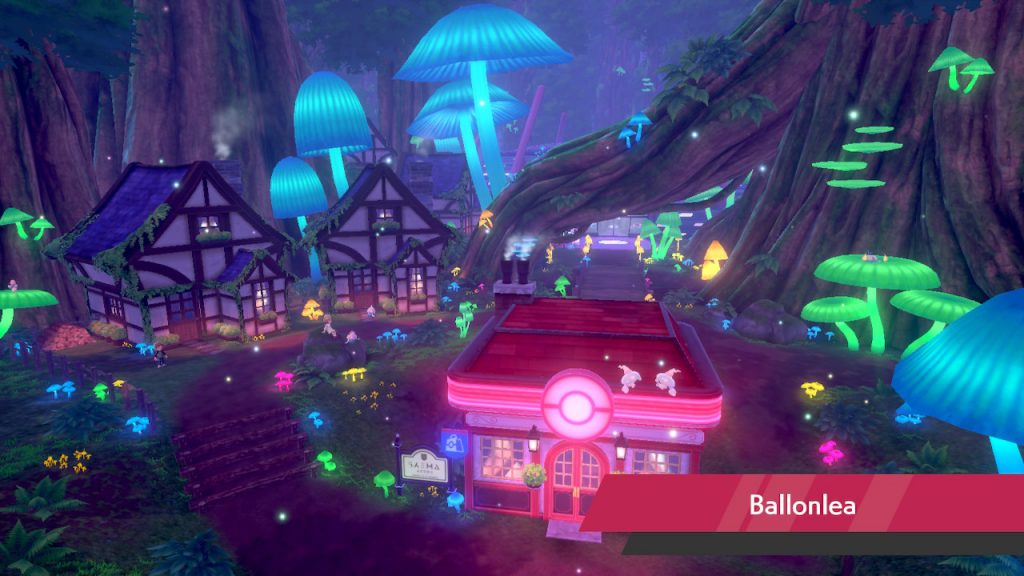
For anyone inclined to explore or branch out, there’s little of that in Sword & Shield. I appreciate the lack of any real tedious areas, but that’s replaced by brevity. Galar is pretty much organized as two clean loops, making for a theme park-like linear route with stops at all the major attractions — Galar’s Pokémon League stadiums. Galar as a region emphasizes Pokémon Battling more than any other that came before, painting them as a sporting event on par with Premier League football. As the fresh-faced challenger, your end goal is to face off with Galar’s champion after clearing all the Gym leaders ranked below him. Other than the emphasis and theming that’s nothing new, though unlike other Pokémon games, that’s all there really is to the plot for the vast majority of the game.
There’s also the question of how it delivers this information. Sword & Shield open up with a cutscene of a figure giving the mandatory “World of Pokémon” speech, and while it’s more visually interesting than Professor Oak standing on a white screen, it’s also oddly silent. The same for rival and Gym leaders’ battle interjections and other moments, like riding the train with another character or chatting it up with the Champion. It’s a credit that the characters’ personalities do come through in the writing, but getting the silent treatment makes these cutscenes feel less impactful than they could be.
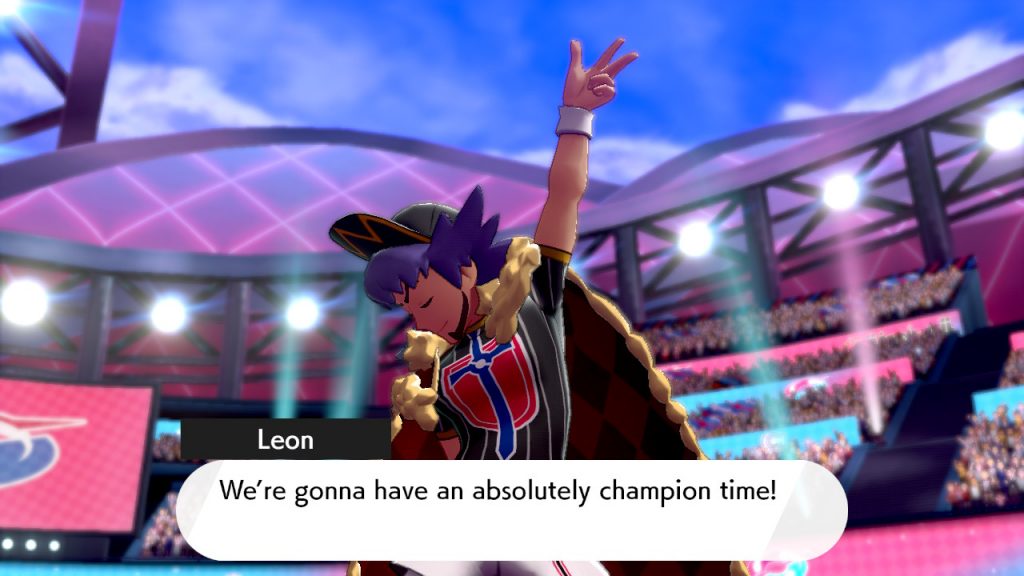
If you don’t really care for plotlines, that’s not a big deal and may even be a refreshingly hands-off approach. This isn’t a question of Pokémon narrative quality either, as while there are some highlights in the series they aren’t exactly known for their stories. The problem is that it creates an unbalanced and backended experience, with almost all the narrative conflict popping up and wrapping up over the last couple hours instead of throughout the experience. This came to a head when about halfway through, some offscreen event happened that could’ve led to a bit of plot, only for another character to outright tell me that it wasn’t my problem and I should just get back to Gyms.
There are occasional glimpses, such as into the history of Galar that sets up its Legendary Pokémon, but rather than your own experiences it’s the growth and development of your rivals that form the real narrative thread Pokémon Sword & Shield. This works well, and while there’s some familiar ground to older characters the likes of Hop, Bede, and (the somewhat underused comparatively) Marnie were all interesting to outright likable. Hop in particular gets some intriguing moments that play into gameplay as much as story, and the (brief) postgame is perhaps more his journey than yours. They and they up-and-coming researcher Sonia sometimes say a bit too much and pop up at every stop of your journey, but by credits I had warmed up to the lot.
Improvements in the Wild Area
While most of the above concerns my experience playing “through” Pokémon Sword, it was when I was playing “in” Pokémon Sword that I was most pleased. Between those railroaded Galar sections is the Wild Area, the biggest playground a Pokémon game has ever had. Cut into distinct sections, as a whole it offers dozens of potential Pokémon to catch at any one time depending on the in-game weather. Seeing what was available at any time and venturing out to try and catch it is pure Pokémon; and with some convenient touches, these games have streamlined the process of getting exactly what you want compared to the series’ history.
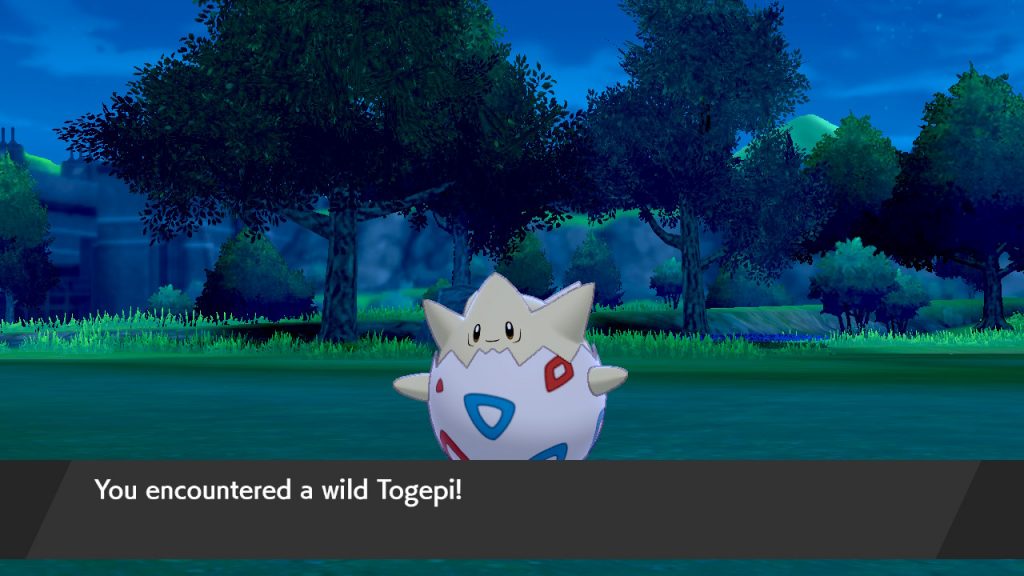
Credit where it’s due, many of these elements were implemented in Pokémon: Let’s Go, Pikachu & Eevee. Early into the game, you gain the ability to manage Pokémon Boxes nearly anywhere you are, experience is given generously to your whole team (while those in Boxes can gain it passively), Camping allows for both easy healing (via Curry, the greatest Pokémon food) and bonding with your Pokémon, and most wonderfully of all overworld Pokémon are back. Thankfully, Game Freak also found a middle ground for random encounters which exist alongside the overworld ones, maintaining the excitement of finding a rare Pokémon and the frustration of accidentally knocking them out.
That alone doesn’t quite make the Wild Area, as everything mentioned above applies to routes as well. Over the several days I played I’d see new and rotating lineups of Pokémon appear, making a stroll through its entirety worthwhile. Wondering what rare or elusive species I might stumble on and seeing how they move in the overworld (you haven’t lived ’til you’ve been rushed by a pack of Sneasel) is sublime. Granted, this wanes over time once you’ve seen everything, but conceptually I hope the Wild Area or areas like it remain a fixture of the series.
Delicious shiny!! #PokemonSwordShield #NintendoSwitch pic.twitter.com/AHXnqlghAq
— ☆星のRicky☆ (@DrSaturnNW) December 2, 2019
While on the subject of Pokémon variety, yes, the entire National Dex is not supported in Pokémon Sword & Shield. If a personal favorite is missing, it can be a letdown in the grand scheme; but the amount of variety is wholly satisfying, and thanks to weather cycling, I still have plenty of previously unseen Pokémon over 50 hours in. Galar’s own regional Pokédex has a respectable amount of variety to it, with Pokémon pulled from every generation. It isn’t in equal measure, as I found a whole lot of Gen V Pokémon, but between the new and returning lineup of species (and moves, and abilities), there’s still a lot to work with.
The Power of Dynamaxing
Represented in the Gyms, the Wild Area, and the story is a regional phenomenon/new gameplay mechanic called Dynamaxing. Discarding both Mega Evolution and Z-Moves, Dynamaxing instead allows you to power up a single Pokémon per battle, which is represented by them growing to gigantic proportions. It’s less visually interesting than Megas, though I feel it’s an improvement on Z-Moves — a feature I was never quite taken with.
For one, the Pokémon only remains Dynamax’d for three turns. In that time, it not only gets better stats but its moves get replaced with “Max” moves. These offer up passive abilities that can play into a battle, such as stat boosts or weather effects. Knowing when to tap into this and how to make the most of your Dynamax time and moves adds some strategy to battle while also giving certain Pokémon and moves added value if they can allow a desired effect. So while they’re less flashy by and large, they do more for battles than a singular superpowered strike.
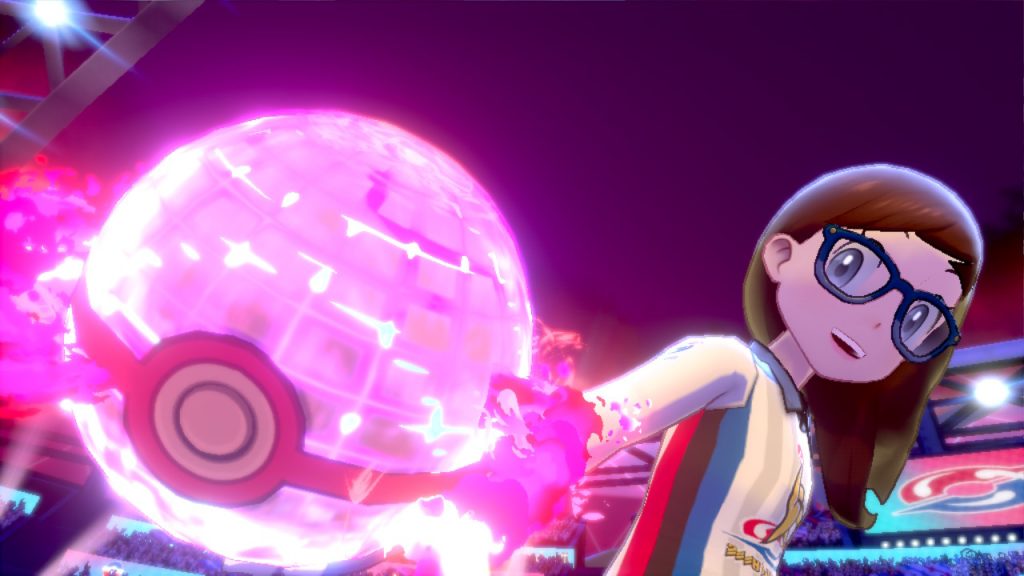
While most important battles in the story predictably end with a Dyamax faceoff, it’s again in the Wild Area that the feature feels more involved and interested. Max Raid Battles are a feature-exclusive to the open area, allowing you to face off with a permanently Dynamax’d Pokémon alongside three other Trainers. These Raids add more to battling, playing with others, and catching up rare and powerful Pokémon — a trio of tentpoles this series has lived by.
The most coveted of these are the select few Pokémon that received Gigantamax forms. Most similar to Mega Evolution, these change how a Dynamax’d Pokémon looks and affords them a signature move of their own. Even non-Gigantamax Pokémon have the benefit of perfect IVs and other rewards, including the return of single use TMs (called TRs) for some of the more desirable moves in the game. There is an element to grinding these out, especially since you only have one shot to catch a Max Raid boss, but other than Gigantamax forms, I’ve yet to come across a Pokémon wholly locked behind the feature.
It says you have Network Connectivity problems
With all this going on in the Wild Area, it’s pleasing to see that when playing solo it all handles well. The most common “issue” is a whole lot of pop up to accommodate a still-impressive number of Pokémon on screen (compared to Let’s Go’s struggle with a pack of Weedle). When playing online, though, things can become a bit more shaky. Other players will start to show up roaming around, and while the site is impressive and true to the spirit of the game, it can lead to added slowdown depending on your network environment and home setup. Nothing that would cause the game to crash, but definitely a difference from the smoother single player experience.
Complicating that further is the Y-Comm menu, Sword & Shield’s dedicated wireless connectivity hub. To put it bluntly, it’s another show of a Nintendo game not conceding to expected user friendliness when it comes to online play. Everything works, but it feels a jumble of pop-up Stamps and Link Code shenanigans, rather than me being able to easily and unrestrictedly play with friends and friends alone when it comes to trading, battling, and Raids. I have multiple instances of random players showing up instead of my intended partner for a trade; and while they’re ultimately inoffensive, it’s still inconvenient.
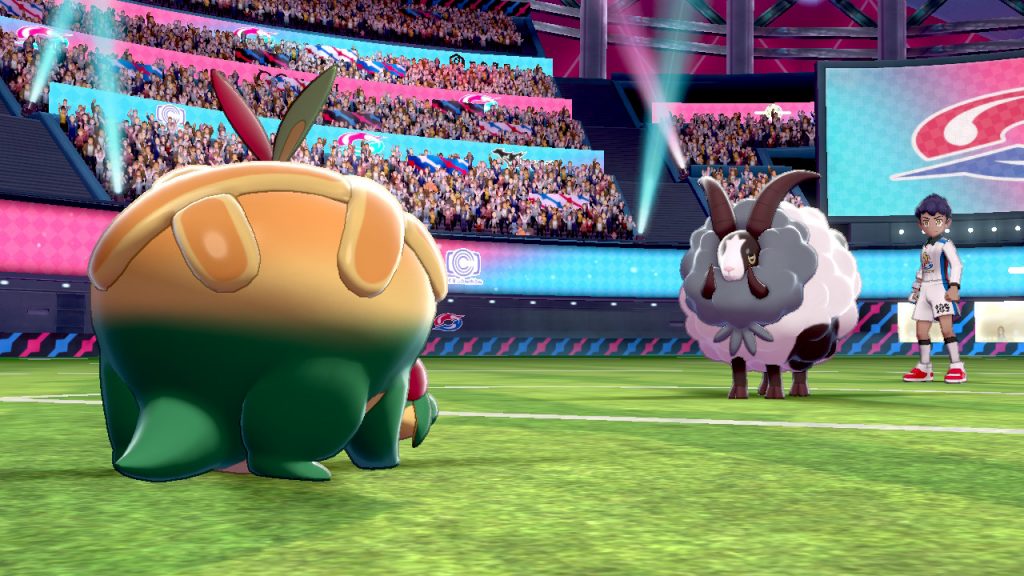
There are some positives, however. Surprise Trading is a fun feature that I’m pleased to see back, letting you send a Pokémon off to someone else and receiving another in return with no ability to request or specify. If there was ever a way to capture “Who’s that Pokémon?!” in game form, it’s Surprise Trades. Link Codes have also bred a community wide level of convenience, such as the code 4448 as of this writing being adopted for swapping Ditto of various natures, IVs, and regions. Time will show if the individual experience can be improved (or if I’m just missing something here), but on a macro level at least it’s nice to see fans making the most of what’s here.
The other core concerns I have with the game lie mostly in the technical aspects. More important to me than having all the Pokémon here is having the ones that look and behave with the kind of fidelity and personality Game Freak has developed for them over the decades. That does come out during Camping, but in battle there are times where an attack or animation takes you out of the moment in its simplicity. The starter evolutions and main Legendaries get to shine, with special animations for their signature moves that play into this element. While I don’t expect the entire Dex to get that treatment, seeing a Pokémon’s model just sort of turn or shake is underwhelming when with a different move they show a more dynamic range.
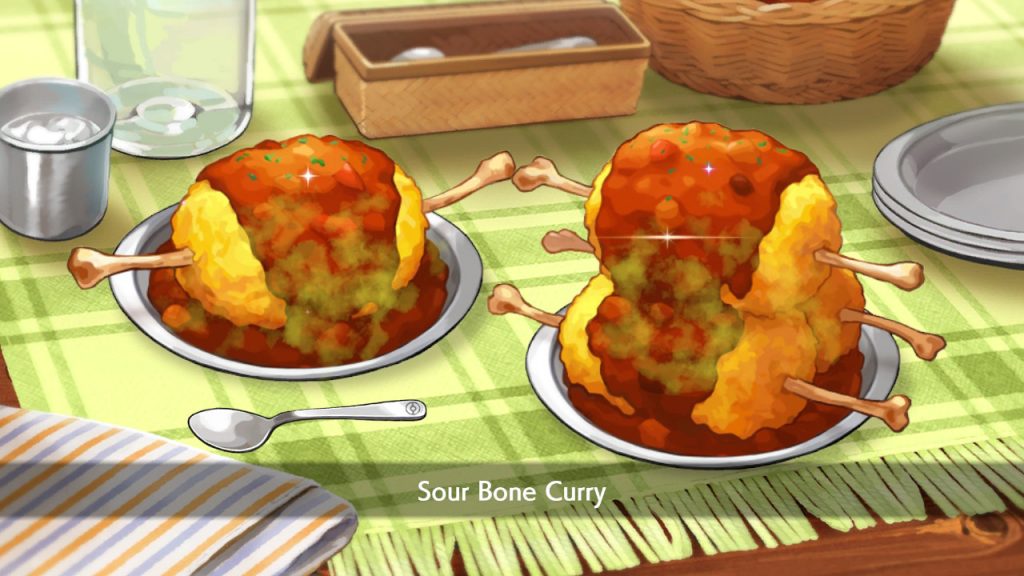
Another worthwhile journey
Much like their namesake, many of Pokémon Sword & Shield’s design choices both complement and oppose each other. The expansive Wild Area offers opportunities to seek out and catch Pokémon to your heart’s content, but Galar’s routes and towns come off as underutilized and linear as they are gorgeous. Its cast of rivals and Gym leaders are interesting and eye-catching, but what story the game has seemed to happen just offstage in favor of yet another League conquest right until the end. When looked at as a whole though, I truly enjoyed my time in the Galar region, even if I feel its best elements are kept in separate rooms from one other.
Are these the console Pokémon games of your dreams? No. The series has stuck to what it knows visually and structurally, and there are some compromises. Instead, Game Freak has given us a game that takes another step forward, bringing us into the series’ eighth generation, while shaking off even more outdated tedium when it comes to catching and raising the Pokémon available. As someone who’s played since the beginning of the franchise, I can comfortably recommend Pokémon Sword & Shield, especially to anyone coming into the series for the first time or after taking a long break from it. As for the rest, if you’re up for more of what makes a Pokémon game a Pokémon game, you’ll still walk away right chuffed.
Leave a Comment
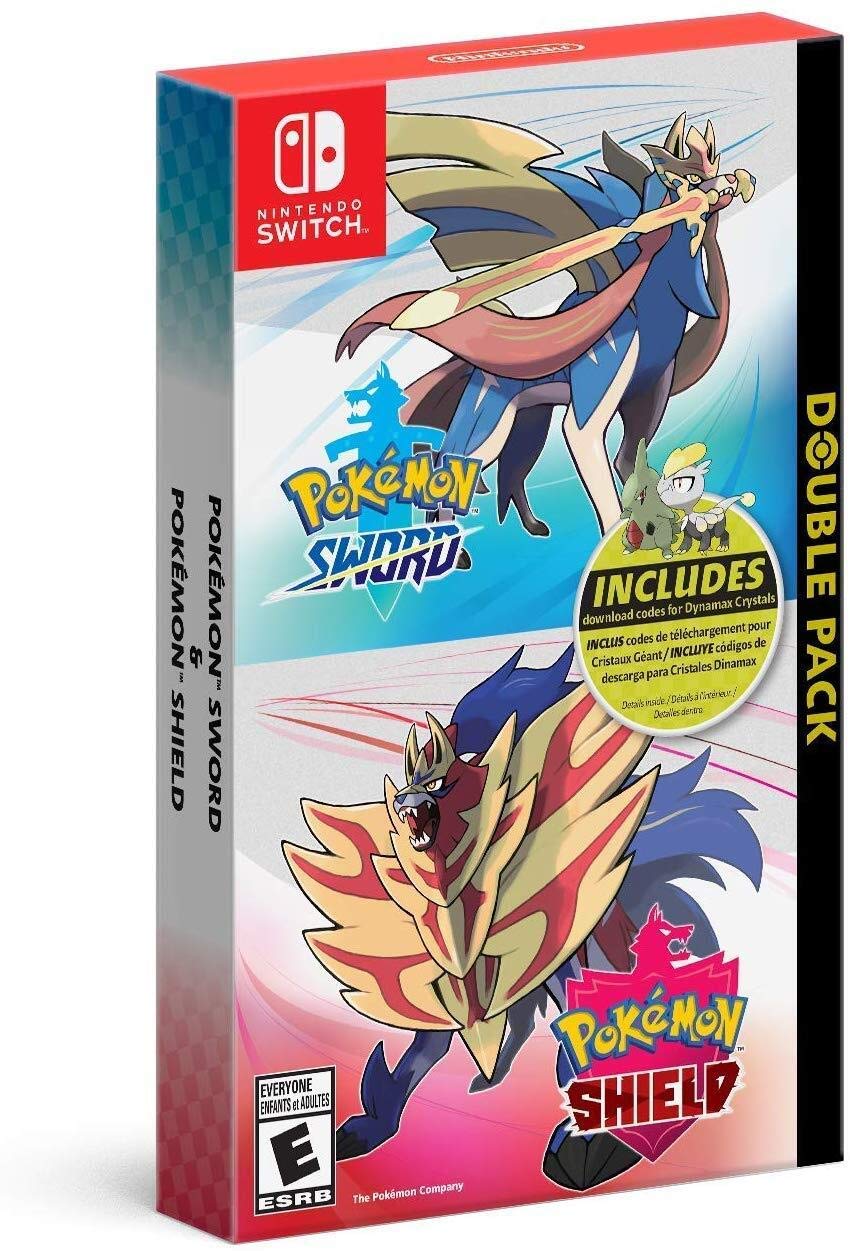
System: Nintendo Switch
Release Date: November 15, 2019
Categories: Role-Playing, Adventure
Publisher: Nintendo
Developer: Game Freak
